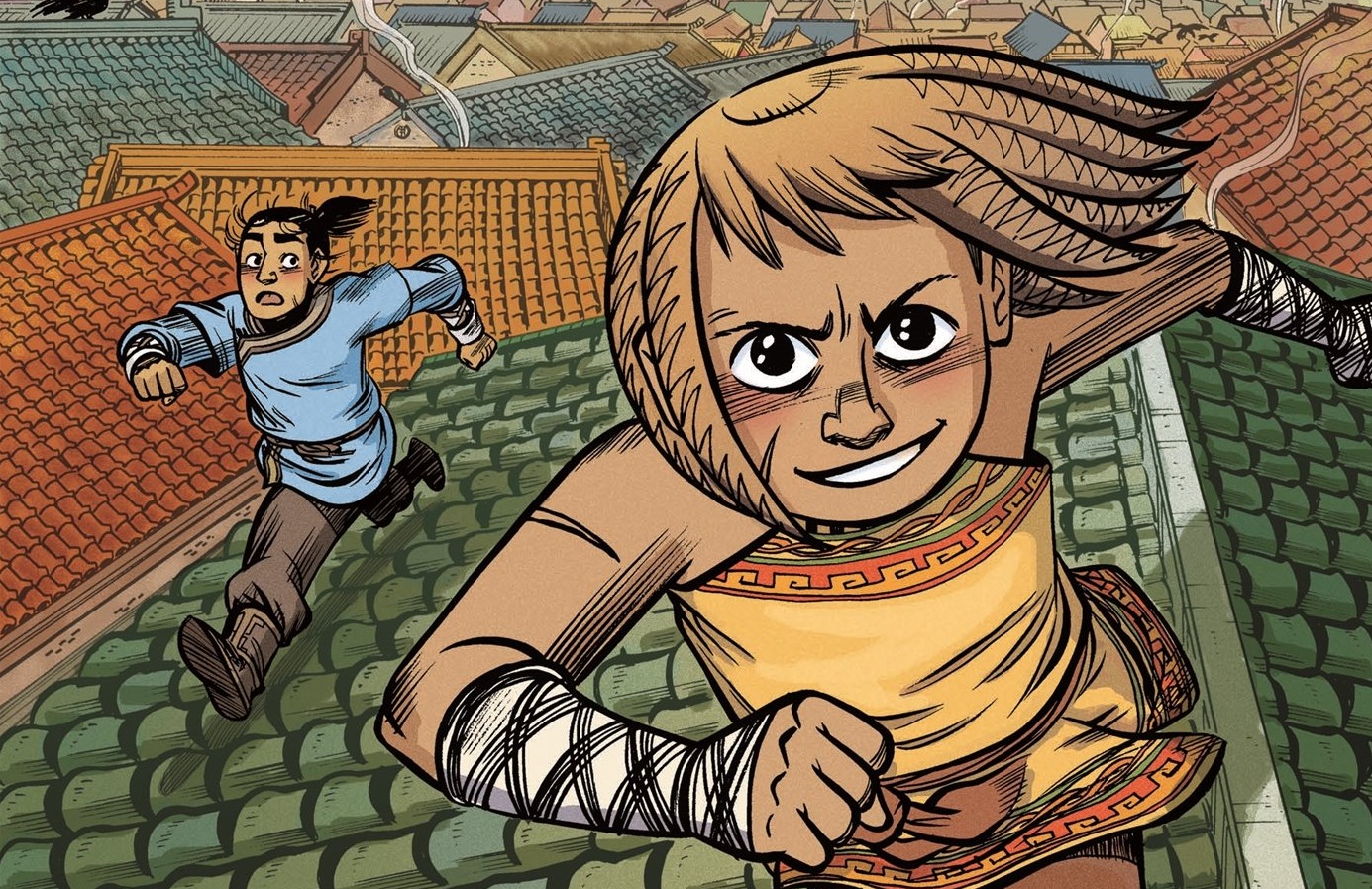Faith Erin Hicks’ The Nameless City was my major draw at the Toronto Comic Arts Festival this year. I’m an avid fan of Hicks’ work and have been following her for nearly a decade (and running into her at a TCAF every couple of years almost throughout). The project, announced a couple of years ago, is slated to be a trilogy – though after finishing Vol. 1 in a single sitting Sunday morning, I have to admit I began hoping for a George R. R. Martin sort of scenario where the end of that story keeps getting a bit further away.
I suspect this is due to The Nameless City‘s deft act of worldbuilding, which both succeeds on its own terms (the eponymous – or non-eponymous? – city is indeed a rich, strikingly realized environment, which I’d like to visit) and in sure-footed support of the story’s surprisingly complex themes. This is a story about class, culture, and power, and the way those elements play out in a hub city with a detailed history and equally detailed future, if that makes sense. The Nameless City sits on a river as a key port of trade, and as much as the graphic novel sits primly atop a well-realized sense of what political pressures have brought its character to this point, it has an equally well-thought-out sense of what important movement may be just around the corner.
And if all that made this sound insanely dry, then the good news is, it’s all in service of an adventure story about two kids who do parkour.
OK, maybe not exactly parkour. But chasing one another across the city’s rooftops, Kai and Rat’s adventures together feel warmly like the sort of self-empowering fantasies kids dream up when they’re still searching for the boundary edge of their own potential. Meanwhile, Kai is learning (uh, badly?) to be a soldier, having just moved to the city; and Rat is a street kid with an open heart and a scar on her cheek.
The book is cleverly visualized, with a strong eye for period detail (the architecture and costumes are worth the sale price all on their own – although I swear one character was FOR SURE meant to evoke Pilot Padme…) and great use of colour and panel storytelling. (Check out the “jump cut” between days 19 and 21.)
Plus, there’s a map on the inside cover. If that doesn’t appeal to you, you’re in the wrong genre.
I stumbled across Tillie Walden’s I Love This Part on Tumblr just a week and a half ago – and glanced the book (and Tillie, as it turned out) out of the corner of my eye while cruising the first floor of TCAF on Saturday. And thank goodness! This. Book. Handed. Me. My. Ass.
It’s a slender little volume that you’ll blast through in ten minutes, unless the transcendent power of the images grab you by the face and you find yourself slowing down on each subsequent page, just to marvel at them. (I did.) I don’t want to spoil much about I Love This Part, other than to say that it is a story about two girls in love, and that its simple, extraordinary visual strategy is so beautiful that I’m sort of amazed I haven’t seen it used this way before. Suffice to say, the way Walden chooses to present her characters in the aimless moments of their time together is perfect.
Now here’s a confession about me: I used to suck at TCAF. TCAF, or as I like to call it, my annual adventure in judging a book by its cover. I spend about a hundred bucks a year, and for the first five or so, probably ended up with one book out of my bag that I actually ended up liking enough to keep.
Fortunately, either I’ve just had an uncommon run of good luck or I’m finally learning how to do this better. Either way, last year and this year have been incredibly fruitful in connecting me to writers, artists and stories I’ll continue to call favourites. One quick example is Rebecca Roher’s Mom Body – a fun and deeply insightful accounting of the pregnancy of a friend of the author, and all the transformation that entails. It’s a story that’s been told a hundred billion different ways, so please believe me when I say that Roher’s relatable writing (and wonderful, cartoony depictions) genuinely made me think about motherhood in a deeper way. A week late for Mother’s Day, but whatever. (You can read the online version here.)


